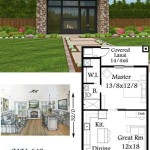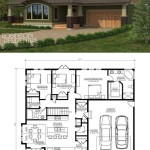Design Your Dream Home With A Comprehensive Plot Planning
Building a dream home involves more than just selecting paint colors and kitchen appliances. It starts with a well-thought-out plot plan, a blueprint that dictates how the house will interact with its surroundings. A comprehensive plot plan considers not only the house's footprint but also the placement of landscaping, driveways, utilities, and other outdoor elements. This careful planning ensures the homeowner maximizes their property's potential and creates a cohesive, functional, and aesthetically pleasing living space.
Understanding Site Analysis
Before even sketching the house's outline, a thorough site analysis is crucial. This process involves evaluating the land's topography, including slopes, soil composition, and existing vegetation. Understanding the land's characteristics helps determine the best location for the house to minimize environmental impact and maximize views and natural light. Site analysis also includes assessing sun exposure, prevailing winds, and potential drainage issues, all of which inform crucial design decisions. For instance, knowing the prevailing wind direction can help determine the optimal placement of windows for natural ventilation, while understanding sun exposure influences the positioning of solar panels or shaded outdoor areas.
Defining the Home's Footprint
Once the site analysis is complete, the next step is defining the home's footprint. This involves deciding the size and shape of the house and its precise location on the plot. Factors such as local building codes, setbacks, and easements restrict where the house can be placed. Within these parameters, homeowners should consider factors like privacy, access to views, and the relationship between indoor and outdoor spaces. A well-defined footprint optimizes the use of the land and creates a harmonious balance between the built and natural environments.
Careful consideration should also be given to the orientation of the house. Proper orientation can maximize energy efficiency by taking advantage of natural light and passive solar heating or cooling. For example, in colder climates, orienting the house with large windows facing south can capture winter sunlight for warmth, while in warmer climates, strategically placed windows and overhangs can minimize heat gain during the summer months.
Integrating Landscaping and Outdoor Elements
A comprehensive plot plan goes beyond the house itself to encompass landscaping and other outdoor elements. These features are integral to the overall design and contribute significantly to the property's functionality and aesthetic appeal. Driveways, walkways, patios, and decks should be carefully planned to facilitate movement and create inviting outdoor spaces. The selection and placement of trees, shrubs, and other plantings can enhance privacy, provide shade, and create visual interest. Integrating these elements into the plot plan from the outset ensures a cohesive and well-designed outdoor environment that complements the house.
Landscaping also plays a vital role in managing stormwater runoff and minimizing erosion. Incorporating features such as rain gardens, permeable paving, and swales can effectively manage rainwater and reduce the environmental impact of the development. Furthermore, thoughtful landscaping can create habitats for local wildlife, contributing to biodiversity and enhancing the natural beauty of the property.
Utilities and Infrastructure Planning
A comprehensive plot plan must also account for the location and routing of utilities and infrastructure. This includes planning for water supply lines, sewer connections, electrical service, and gas lines. Careful coordination with utility companies is essential to ensure these services are available where needed and that the necessary easements are in place. Properly planned utility connections not only ensure the functionality of the home but also prevent costly rework or disruptions during the construction process.
In addition to traditional utilities, homeowners may also consider incorporating sustainable infrastructure elements into their plot plan. This might include provisions for rainwater harvesting systems, greywater recycling, or solar panel installations. Integrating these sustainable features early in the planning process ensures they are seamlessly incorporated into the overall design and maximizes their effectiveness.
Addressing Local Regulations and Permits
Finally, a successful plot plan must adhere to local zoning ordinances, building codes, and environmental regulations. These regulations dictate various aspects of the development, including setbacks, building heights, and permitted land uses. Securing the necessary permits and approvals before construction begins is crucial to avoid delays and potential legal issues. Working with a qualified architect or land planner can streamline this process and ensure the plot plan complies with all applicable regulations.
By addressing these critical aspects, a comprehensive plot plan provides a roadmap for building a dream home that is not only beautiful and functional but also environmentally responsible and integrated harmoniously with its surroundings. This meticulous planning process ensures that the final product meets the homeowner's needs and vision, creating a true sanctuary they can enjoy for years to come.

Design Your Own House Floor Plans Roomsketcher

How To Design Your Dream House A Comprehensive Guide For Homeowners

Dream House Plans Designs Customizable Home Floor

Dream House Plans Designs Customizable Home Floor

Dream House Plans Designs Customizable Home Floor

Dream House Plans Designs Customizable Home Floor

51x95 Irregular Plot Yes Complete Solution Of Your Dream House Is Here Get Modern Designs With

House Map Customized Designs By Professionals Imagination Shaper

How To Design A House From Sketch Reality

Plot Size 60x63 With Pool Yes Complete Solution Of Your Dream House Is Here Get Modern Designs
Related Posts








